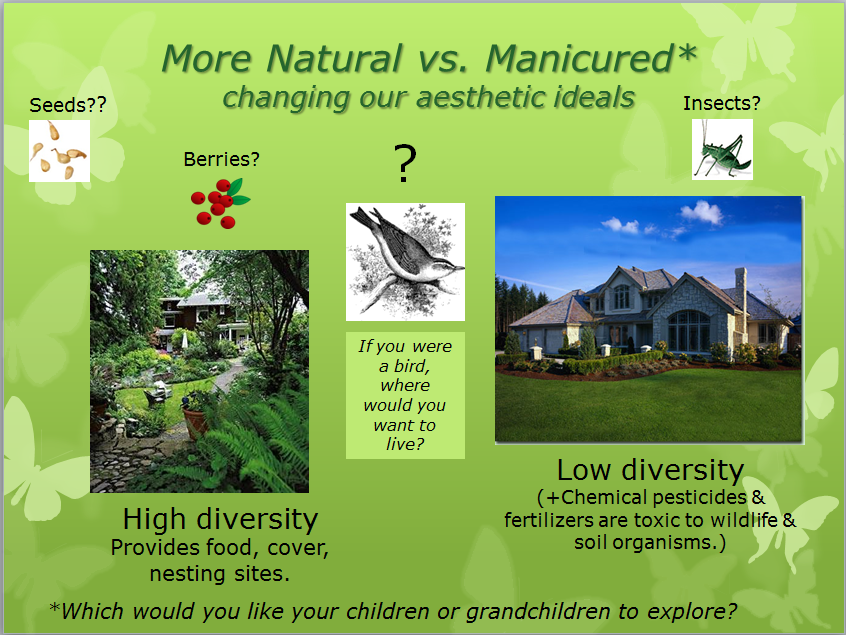Balancing human needs with ecological preservation
 Habitat loss is the biggest cause of species decline on our planet. Human activities are the major cause of habitat destruction. No other species on this planet changes the landscape to suit their needs to such a degree.
Habitat loss is the biggest cause of species decline on our planet. Human activities are the major cause of habitat destruction. No other species on this planet changes the landscape to suit their needs to such a degree.
It is easy to blame people who are cutting down tropical rain forests in South America or people who are looking to farm or graze their animals on preserves set aside for wildlife in Africa. We need to recognize that some people are just trying to survive the best way they know how. The answer lies with education, especially of women– to reduce exponential population growth, to make people realize and understand the impact they are having on earth’s limited resources and in preserving or relearning traditional food production practices.
The Mesopotamian King Gilgamesh cut down the legendary Cedar Forest to build a great city at the dawn of civilization 4500 years ago. And after several millennia of exploitation, only tiny remnants of the famous Cedars of Lebanon, Cedrus libani, forests survive today. Western Civilization has since continued to cut down forests, deplete agricultural lands, and other natural resources, and then move on to greener pastures—often brutally displacing native populations, relegating them to marginal land, enslaving them to work in the fields for a cash crop or in mines or sometimes even committing genocide, consciously (or unconsciously through the spread of diseases).
Unfortunately, much of our economy is based on greed, the desire for wealth and the lifestyle of consumption. Many people are envious or fascinated by the “lifestyles of the rich & famous.” Shopping is often a form of entertainment. Ads bombard us, telling us we need the next new gadget. Consequently, some of our best farmland is now covered with warehouses and distribution centers to house imported goods.
Land is constantly being cleared for new housing developments, shopping centers, and other businesses. Many local governments do require developers to set aside a certain percentage of the land and to replant landscapes afterwards. But oftentimes, not much thought is put into these new landscapes in regards to habitat restoration, functionality, maintenance requirements and how long it will take for replacement trees and shrubs to achieve the size of the ones that were removed.
Instead of abandoning the old and encroaching more into wild lands, perhaps we could restore and revitalize urban centers–Forgo new construction in favor of repairing and remodeling the old, including replanting with more natural landscapes. It does no good to rue the past and blame our ancestors harshly. We should not judge them outside their time period and culture. We can try to correct past mistakes and plan better for the future.
We need to realize that we are part of the natural world and that we can create landscapes that will not only be aesthetically-pleasing but can harbor a rich diversity of life as well. Many people will find it difficult to change their landscape “ideal” from neat and tidy manicured lawns to one that is attractive in a more natural, less-controlled way. We can work with nature by thinking of the needs of other creatures as well as people and be a little tolerant if a few of our prize plants get nibbled on if we realize that other creatures need to eat and that each organism has a place in the web of life. Natural landscapes are more interesting due to increased biological diversity. Children and adults can delight in finding frogs, snakes and pill bugs in their own backyard!
Ecology literally means the study of “home;” whereas, economy is the management of “home.” It makes sense that we use what we learn about our environment in order to better manage it along with our own basic needs.
Photo (ca. 1915). I believe the young girl in this photograph is my grandmother Alice Cornett along with her brothers and her father, John Cornett. He was a tenant farmer in Neodesha, Kansas.

